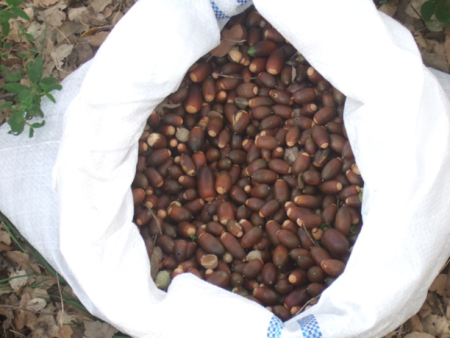
Objective:
Solve the problem of the fragility of oak acorns used for reforestation and animal feed by improving the process of their conservation for a period close to a year.
Context:
Oak acorns offer a considerable potential as a NWFP. Besides their importance in reforestation and animal feeding, their use in human food begins to generate interest. Every year, In addition to production irregularity, a large part of oak acorns is lost or altered and its quality deteriorates over time. Acorns are known as recalcitrant seeds and should be then treated as fruits. They cannot be stored with forest seeds. Their storability is, particularly, difficult because they do not withstand even moderate dehydration (minimal moisture content over 30%) and do not tolerate strongly negative temperatures and because of pathogenic fungi hence the importance of a methodology that overcomes this problem.
Contacts:
Boutheina STITI, stitibou@gmail.com, http://www.inrgref.agrinet.tn/
Faten MEZNI, faten-mez@hotmail.com, http://www.inrgref.agrinet.tn/
Sondes FKIRI, sondesfkiri@gmail.com, http://www.inrgref.agrinet.tn/
Abdelhamid KHALDI, khalditn@yahoo.fr, http://www.inrgref.agrinet.tn/
Further information:
Boutheina STITI. 2015. La conservation des glands de chêne-liège: un maillon important de la régénération. Fiche technique FAO in Filière des semences forestières et pastorale en Tunisie. Annexe 2 (141-143).Fao-Direction Générale des Forêts (DGF).Tunisie.